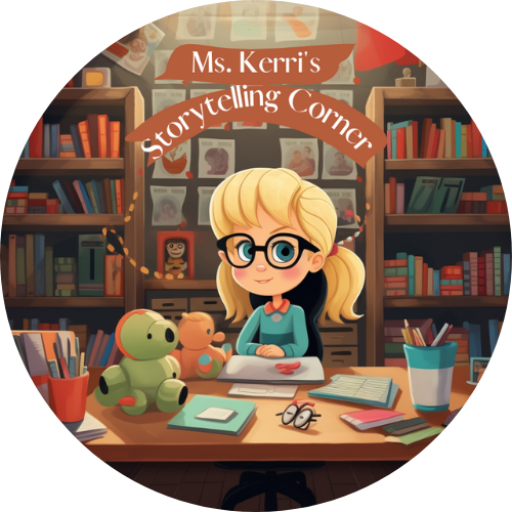Reading Aloud: The Key to Learning Success
Introduction
Reading is a fundamental skill that lays the foundation for a child’s academic success. As parents and educators, we’re always looking for ways to improve children’s reading abilities and promote a love for literature. One effective method that’s been proven to enhance comprehension and overall learning success is through read-aloud. This simple but powerful technique involves an adult or older child reading aloud to younger children or those learning to read. In this blog post, we will dive into the benefits of read-aloud and how they can help children develop strong reading skills and deepen their understanding of what they read.
Decoding the Science: The Brain’s Response to Reading Aloud
Reading aloud to children has a profound impact on their brain development and cognitive abilities. When a child is read to, their brain is activated in multiple areas, such as the visual and auditory cortex, language processing centers, and the comprehension and interpretation regions. This engagement stimulates neural connections, strengthens neural pathways, and improves overall brain function.
Furthermore, reading aloud helps children develop their listening skills, as they learn to focus and pay attention to the words being spoken. This auditory processing enhances their language development and vocabulary acquisition. Additionally, when children hear stories being read aloud, they are exposed to different sentence structures, word choices, and storytelling techniques, which in turn expands their language skills.
Studies have also shown that reading aloud helps to foster a love for reading and literature in children. The shared experience of listening to a story being read aloud creates positive associations with books and reading, making it an enjoyable and pleasurable activity.
%203.pdf%20(Billboard%20(Landscape)).png)
Reading Aloud & Comprehension: Strengthening Connection
When it comes to reading comprehension, the connection between reading aloud and learning success is undeniable. Reading aloud not only helps children develop a deeper understanding of what they read but also strengthens their overall comprehension skills.
By listening to a story being read aloud, children can focus on the words being spoken and follow along with the story. This engagement allows them to make connections, ask questions, and develop a better understanding of the plot, characters, and themes. It also helps them to visualize the story and develop their imagination.
In addition, reading aloud exposes children to different sentence structures, vocabulary words, and storytelling techniques. This exposure expands their language skills and enhances their ability to comprehend more complex texts.
Furthermore, reading aloud fosters a love for reading and literature in children. The shared experience of listening to a story creates positive associations with books, making reading an enjoyable and pleasurable activity.
Overall, reading aloud is a powerful tool that strengthens the connection between comprehension and learning success, setting children up for academic achievement and a lifelong love for reading.
Beyond the Textbook: Real-Life Benefits of Reading Aloud for Learning Success
Reading aloud to children goes beyond simply improving their reading comprehension skills. It has numerous real-life benefits that contribute to their overall learning success. When children are regularly exposed to read-aloud, they develop strong language skills and vocabulary acquisition. This not only enhances their ability to understand and interpret written texts but also prepares them for effective communication in their everyday lives.
Additionally, reading aloud promotes critical thinking and problem-solving skills. As children engage with different storylines and characters, they learn to analyze and make connections between events, predict outcomes, and draw conclusions. These cognitive skills are transferable to various academic subjects and real-life situations.
Moreover, reading aloud helps children develop empathy and emotional intelligence. They can relate to the experiences and emotions of the characters in the stories, which enhances their understanding of others and fosters compassion and kindness.
By incorporating read-aloud into children’s daily routines, whether through children’s book apps, online platforms, or traditional storybooks, parents and educators can unlock these real-life benefits that go beyond the textbook and promote lifelong learning success.
Engaging Exercises: Tips on Improving Reading Aloud Skills for Better Comprehension
Reading aloud is an incredibly powerful tool for enhancing comprehension skills in children. Here are some engaging exercises to help improve your reading-aloud skills and promote better comprehension.
1. Choose engaging and age-appropriate books: Select children’s books that capture their interest and are suitable for their age level. Popular children’s read-aloud, children’s bedtime stories, or even reading children’s books online can be great options.
2. Use expressive voices and gestures: Bring the characters to life by using different voices, tones, and gestures. This helps children engage with the story and better understand the emotions and actions of the characters.
3. Pause and ask questions: Pause during the reading to ask questions about the story. This encourages children to think critically, make predictions, and analyze the plot and characters.
4. Encourage participation: Engage children by asking them to participate in the reading. For example, you can have them repeat certain words or phrases, or even act out parts of the story.
5. Explore phonics and word recognition: Use children’s phonics or learning phonics exercises to help children recognize and sound out words. This builds their reading skills and promotes better word comprehension.
6. Practice reading fluency: Encourage children to read along with you or take turns reading aloud. This helps them develop their reading fluency and confidence.
7. Utilize technology: Take advantage of resources like children’s stories on YouTube or read-aloud for kindergarten to provide a variety of reading experiences.
By incorporating these engaging exercises into your reading-aloud sessions, you can create an interactive and enjoyable experience for children, promoting better comprehension and a lifelong love for reading.
Click HERE for an amazing selection of Indigenous Children’s Books
.pdf%20(Billboard%20(Landscape)).png)
Conclusion
In conclusion, reading aloud is a powerful tool that has numerous benefits for children’s comprehension and overall learning success. By engaging in read-aloud, children’s brains are stimulated in various areas, enhancing their language development, vocabulary acquisition, and overall brain function. Through read-aloud, children also develop a deeper understanding of what they read, as they can focus on the words being spoken, make connections, and visualize the story. Furthermore, read-alouds go beyond improving comprehension skills; they promote critical thinking, problem-solving abilities, empathy, and emotional intelligence. By incorporating engaging exercises into reading-aloud sessions, such as using expressive voices and gestures, asking questions, and encouraging participation, children can further enhance their comprehension skills and develop a lifelong love for reading. Whether through children’s books, online platforms, or read-aloud videos on YouTube, read-alouds offer a powerful way to engage children in reading and promote their overall learning success. So, let’s keep reading aloud to our children and see them thrive in their comprehension and love for literature.

Ms. Kerri’s Corner provides a exciting virtual space for preschool learning. Through a variety of engaging activities, she exposes young minds to early math, literacy, science and social-emotional skills in a developmentally appropriate way. Centers for blocks, art, books and music allow children to explore hands-on learning at their own pace. Guided lessons subtly introduce number sense, letter sounds and narrative thinking. Careful observation gives insight into each child’s progress across domains. Viewers are also invited to participate, reinforcing that their ideas are valued. By making learning fun yet purposeful, Ms. Kerri lays the groundwork for future academic success while fostering creativity and imagination. Her program offers preschoolers valuable screen-based learning experiences.




